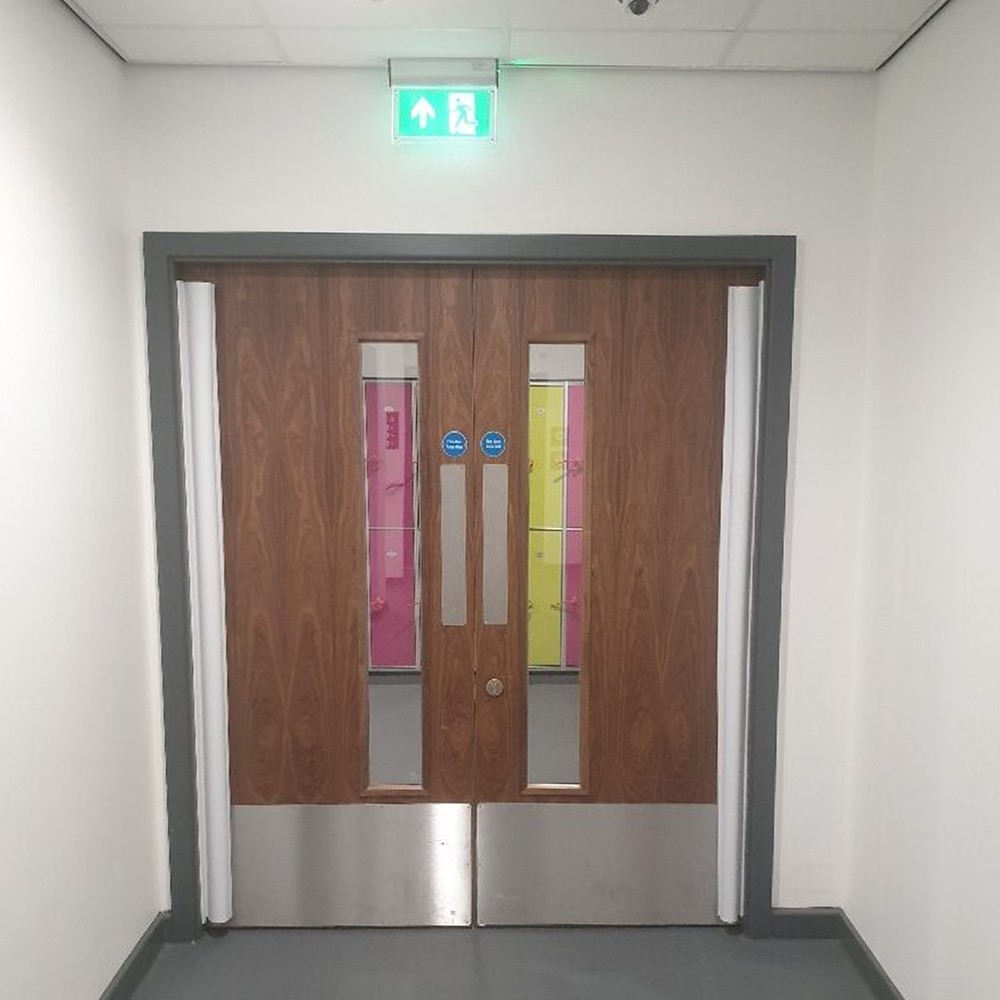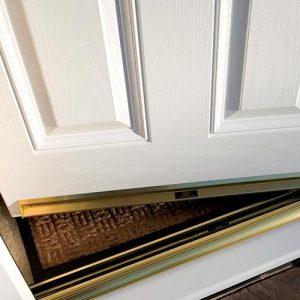The Value of Fire Doors for Making Certain Optimum Building Safety
The Value of Fire Doors for Making Certain Optimum Building Safety
Blog Article
Recognizing the Different Sorts Of Fire Doors for Enhanced Safety
In the realm of building security, comprehending the various kinds of fire doors is extremely important. These specialized doors not only work as barriers against fire and smoke yet also play a critical function in ensuring safe discharge during emergency situations. From typical fire-rated doors that shield versus flames to acoustic fire doors that offer both fire resistance and audio insulation, each type is created with specific functions in mind. The combination of glass fire doors and the need of fire leave doors even more highlight the multifaceted nature of fire door applications. What essential elements must center managers think about to make best use of the efficacy of these lifesaving obstacles?
Requirement Fire-Rated Doors
Common fire-rated doors are a critical element in ensuring structure security and conformity with fire regulations. These doors are particularly created to resist the spread of fire and smoke, providing important defense to residents and home. Created from products such as steel, gypsum, and fire-resistant wood, they can hold up against heats and keep structural stability for varying durations, typically ranging from 20 mins to 3 hours.
The effectiveness of common fire-rated doors is quantified by their fire-resistance score, which is figured out through rigorous screening under regulated problems. This ranking shows the duration throughout which the door can have fires and warmth, thereby permitting added time for evacuation and emergency reaction. In addition, these doors commonly feature intumescent seals that broaden when subjected to heat, more preventing the passage of smoke and poisonous gases.
Installment of conventional fire-rated doors must abide by rigid building ordinance and standards, such as those established by the National Fire Protection Association (NFPA) and the International Structure Code (IBC) Regular assessments and maintenance are important to make certain that these doors operate correctly in an emergency situation. Appropriately installed and maintained fire-rated doors are essential in boosting overall building security and reducing fire-related dangers.
Smoke Doors
Smoke doors play a critical function in fire safety and security by particularly attending to the containment of smoke, which is usually extra hazardous than flames during a fire case. Smoke breathing can lead to extreme respiratory system problems, disorientation, and even fatalities, making smoke doors an important part in emergency planning. These doors are developed to restrict the activity of smoke in between various areas within a structure, therefore giving more secure discharge paths and lowering prospective damage to building.

In addition, smoke doors are typically geared up with automatic closing mechanisms, triggered by smoke alarm or smoke alarm, to ensure they close without delay during an emergency. By including smoke, these doors assist preserve reduced temperatures and more clear exposure in getaway paths, making them an essential aspect in comprehensive fire safety and security methods. Their appropriate setup and maintenance are necessary to ensure optimum performance when most required.
Acoustic Fire Doors
Acoustic fire doors offer a navigate to these guys dual feature in both fire security and sound attenuation, making them a beneficial enhancement to buildings where sound control is vital. These doors are engineered to not just satisfy extensive fire resistance standards yet likewise to significantly reduce audio transmission, therefore enhancing total building efficiency.
The building of acoustic fire doors generally includes a combination of dense materials and specialized seals. These components collaborate to produce a reliable barrier versus both fire and sound. High-density cores, such as mineral boards or composite products, are frequently utilized in the door leaf to maximize sound insulation. Furthermore, the door Our site framework and seals are made to keep acoustic integrity while providing robust fire resistance.
Acoustic fire doors are especially beneficial in environments where personal privacy and quiet are critical, such as health centers, hotels, and instructional organizations. They aid to maintain a tranquil ambience by decreasing the transmission of sound between areas or corridors while making certain conformity with fire security regulations. In enhancement to their practical benefits, these doors can be customized to mix perfectly with the building aesthetic appeals of a building, making sure that safety and security does not come at the cost of design.

Glass Fire Doors
Glass fire doors, frequently utilized in modern building layouts, offer a mix of openness and security that conventional fire doors can not match. These doors incorporate the aesthetic charm of glass with crucial fireproof buildings, making them a perfect choice for contemporary buildings. Engineered with specialized fire-resistant glazing, glass fire doors can stand up to high temperatures and protect against the spread of fires and smoke for a specified period, normally ranging from 30 to 120 mins.
The building of glass fire doors includes numerous layers of solidified glass, typically treated with intumescent materials that broaden when exposed to heat, further boosting their fireproof abilities. These doors are not just useful in terms of fire safety and security yet also enable all-natural light to permeate with rooms, contributing to energy efficiency and a more welcoming setting.
In addition, glass fire doors can be incorporated with numerous framework materials such as steel or aluminum, which give added architectural assistance and resilience. Making use of such doors is especially advantageous in commercial, academic, and medical care setups where exposure and safety are extremely important. By meeting rigid fire safety laws and keeping an open, contemporary visual, glass fire doors stand for a critical development in fireproof building and construction.

Fire Departure Doors
Fire leave doors are an essential element of any building's security facilities, created to offer a swift and safe and secure means of egress throughout emergency situations. These doors are tactically situated to make certain passengers can promptly and securely evacuate the premises in the event of a fire or other unsafe circumstances. Unlike conventional doors, fire leave doors should comply with rigid regulatory standards, ensuring they can execute reliably under discomfort.
A vital function of fire escape doors is their capability to open easily from the inside, typically geared up with panic bars or push pads. This layout assists in rapid discharge and stops bottlenecks that can take place during high-stress circumstances. In addition, fire escape doors are frequently constructed from fire-resistant products to stop the spread of flames and smoke, therefore giving crucial added time for discharge and firefighting initiatives.
Another vital facet is the clear signage and illumination related to fire escape doors. Correct signage makes sure that these exits are conveniently recognizable also in low-visibility problems. Regular maintenance and evaluations are critical to assure that these doors function correctly when needed. Inevitably, the effectiveness of fire leave doors is a vital component in guarding lives try this out and minimizing residential or commercial property damages throughout emergency situations.
Final Thought
In summary, understanding the various kinds of fire doors, consisting of conventional fire-rated doors, smoke doors, acoustic fire doors, glass fire doors, and fire departure doors, is important for improving safety in buildings. Each kind uses specific benefits, from fire and smoke containment to seem insulation and aesthetic assimilation, guaranteeing detailed security. Fire doors. Normal upkeep and compliance with security requirements are vital to guarantee their performance in guarding owners and helping with safe evacuation during emergencies
Report this page